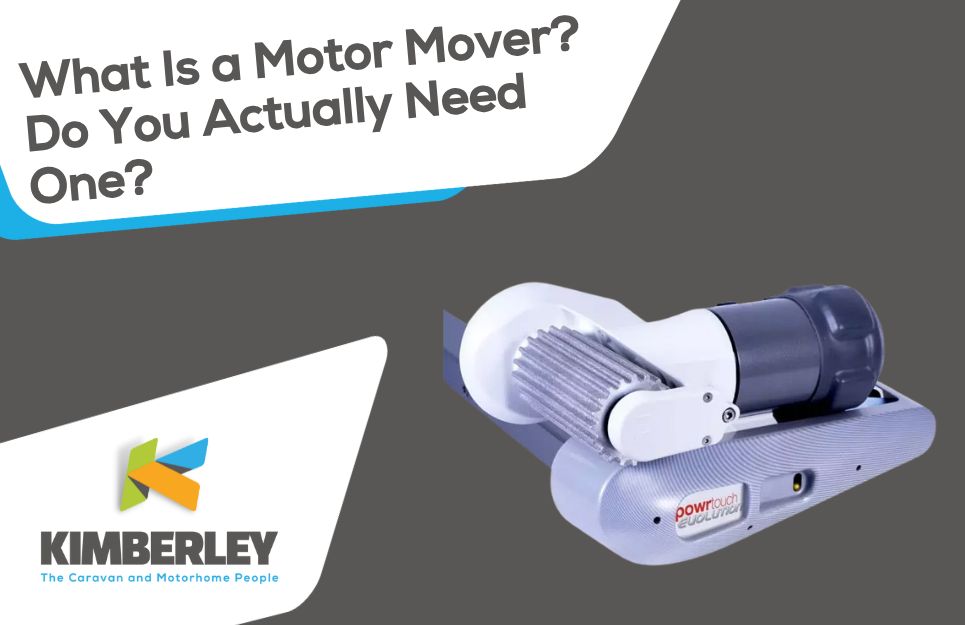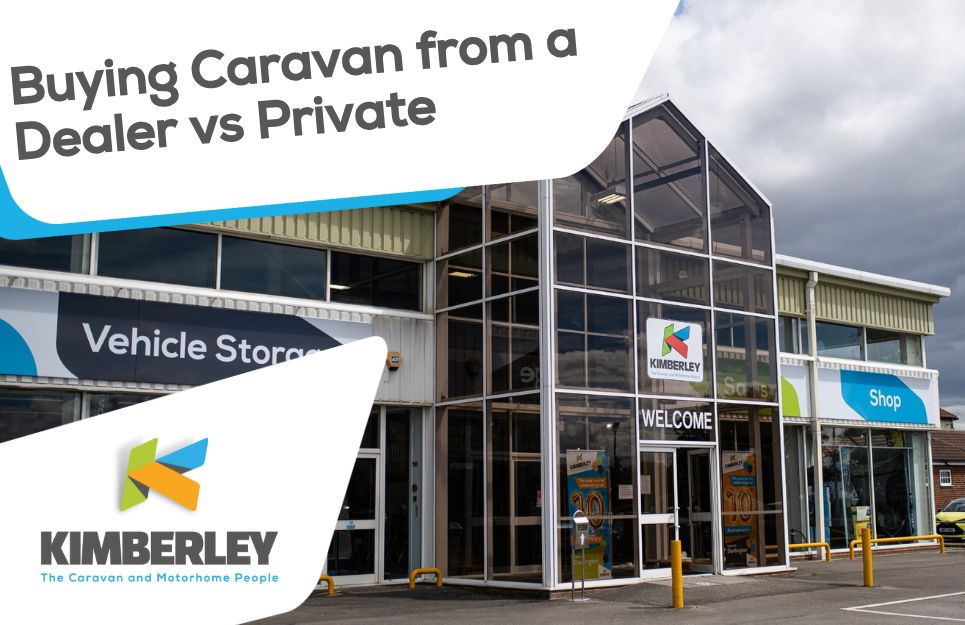
Let’s not beat around the bush—trying to reverse a caravan into a tight pitch or squeeze it onto a narrow drive can turn a peaceful getaway into a full-blown argument. Sound familiar? You’re not alone. That’s where the humble motor mover comes in. It's one of those gadgets that doesn’t look all that flashy but can completely change your towing experience. If you’re new to caravanning, or you’ve just bought your first tourer, you might be wondering what exactly a motor mover is, how it works, whether it’s worth the money—and which one’s the right fit.
Let’s unpack it all.
Picture this: you’ve arrived at a site, but the pitch is sloped, the corner’s tight, and there’s a low stone wall that wasn’t in the brochure. Instead of sweating it out with shouts of “left a bit!” and “STOP!”, you grab a remote and watch your caravan edge into place like it’s remote-controlled. Because, well, it is.
A motor mover is an electric motorised device fitted to your caravan’s chassis. It clamps onto the wheels and, at the touch of a button, moves your caravan forwards, backwards, left, right—even pivots it on the spot. It works independently from your towing vehicle, meaning you can unhitch and still move your van with pinpoint accuracy.
Motor movers aren’t one-size-fits-all. The type you’ll need depends heavily on your caravan setup.
For single-axle caravans:
You’re looking at a standard manual or automatic motor mover. One motor per wheel (usually two total), and you’re good to go.
Great for lighter vans or beginners.
For twin-axle caravans:
You’ll need a more powerful setup—either a 2-motor system (which can handle most basic manoeuvring) or a 4-motor system (for maximum control, especially on gradients).
Twin axles are heavier, so the more power and traction, the better. Otherwise, you might struggle on gravel or grass.
One thing to keep in mind? Weight. Motor movers add around 30–70kg, depending on the model. For some, that’s the difference between a perfectly loaded caravan and one that’s pushing your max payload.
Here’s the thing—if you’ve got loads of space at home, a flat driveway, and always pitch up on massive open sites... maybe you don’t. But that’s not most people.
You might need a motor mover if:
Your drive is sloped, tight, or both
You regularly store your van in a crowded storage yard
You travel solo and need to park without assistance
You’re done playing tug-of-war with a jockey wheel in muddy conditions
It’s not just about convenience—it’s about independence and confidence. A mover gives you full control. No second guessing. No shouting matches. No worrying whether your clutch will survive another 37-point turn.
Let’s not sugar-coat it. Motor movers are brilliant, but they’re not flawless.
Pros:
Park your caravan with surgical precision
Work solo with zero stress
Avoid clutch wear and potential towing accidents
Safer manoeuvring on slopes or awkward terrain
Peace of mind when pitching late or in bad weather
Cons:
They’re not cheap
They add weight (and can eat into your payload)
Batteries need to be charged and well-maintained
You’ll still need a steady hand with the remote—it’s not magic
Still, for many caravanners, the trade-offs are more than worth it.
There’s a handful of names that pop up again and again—and for good reason. These are the tried-and-tested motor mover brands you’ll see in most UK dealerships:
Powrtouch (by Truma)
The go-to for many. Solid reputation, excellent aftersales, and often comes with a 5-year warranty. The Powrtouch Evolution range is particularly popular, especially for twin-axle setups.
Reich
Known for lightweight models and high build quality. The Reich Easydriver Pro and Active ranges are favourites, especially among those wanting minimal added weight.
Enduro
Great balance between price and performance. The EM203 is a best-seller for single-axle caravans.
Purpleline e-go
Sleek design, great manoeuvrability, and impressive power. A bit more niche, but growing fast in the UK market.
It’s a bit like choosing a smartphone—everyone’s got an opinion, but the right one depends on your personal setup and budget.
Alright, let’s talk brass tacks. A decent motor mover for a single-axle caravan usually starts around £800–£1,100, including fitting. For twin-axle vans—especially those needing a 4-motor setup—you could be looking at £1,500–£2,000+.
Here’s a rough breakdown:
Basic manual single-axle mover: £700–£900
Automatic single-axle mover: £900–£1,200
Twin-axle 2-motor system: £1,200–£1,500
Twin-axle 4-motor system: £1,800–£2,200
Fitting (if not included): £150–£300
Some dealerships will fit them during your handover—especially if you’re buying a van new or used. It's worth asking when negotiating.
Technically, yes, you can install a motor mover yourself. But unless you’re confident around electrics, battery terminals, and drilling into chassis rails, it’s probably best left to a professional. A poorly fitted mover won’t just work badly—it can be unsafe.
Plus, if anything goes wrong, having professional installation often protects your warranty. Not to mention your knees.
Maybe. Maybe not. But once you’ve used a motor mover, it’s a bit like having reversing cameras or heated seats. You wonder how you ever managed without it.
If you’re just getting started with caravanning, a mover takes away the scariest part of towing—the tight, awkward bit at the end. It’s like having an extra pair of hands (and a whole lot more patience).
So ask yourself this: do you want to manoeuvre your caravan—or wrestle it?
If you’d rather leave the wrestling to the campsite Wi-Fi, a motor mover might just be your next smart buy.
Want help finding the right mover for your caravan? We’ve got you covered—Used Caravans at Kimberley, usually already come with one fitted, or give us a ring for no-nonsense advice.
 30/10/2025
30/10/2025
You've been scrolling through AutoTrader and Facebook for weeks now. That Coachman Laser at £2,000 less than dealer price looks tempting, doesn't it? The private seller seems genuine enough in their messages. They've got photos, a service history (well, most of it), and they're just over in Chesterfield. What could possibly go wrong?
 13/10/2025
13/10/2025
The NEC Caravan, Camping & Motorhome Show is the biggest week in the UK touring calendar. The air buzzes with excitement, the halls shine with new models, and it’s the best place to compare caravans and motorhomes side by side. If you’re wondering how to buy at the NEC Caravan and Motorhome Show or what to look out for before making a decision, this guide is for you.
When people ask about entry-level touring caravans, the name that usually comes up first is the Sprite. And there’s a reason for that. The 2026 Swift Sprite range is designed for couples and families who want the reliability of a Swift build without the premium price tag. It’s practical, stylish, and straightforward.
If you’re new to caravanning, or maybe you’re looking to downsize, the Swift Sprite range is the perfect place to start.